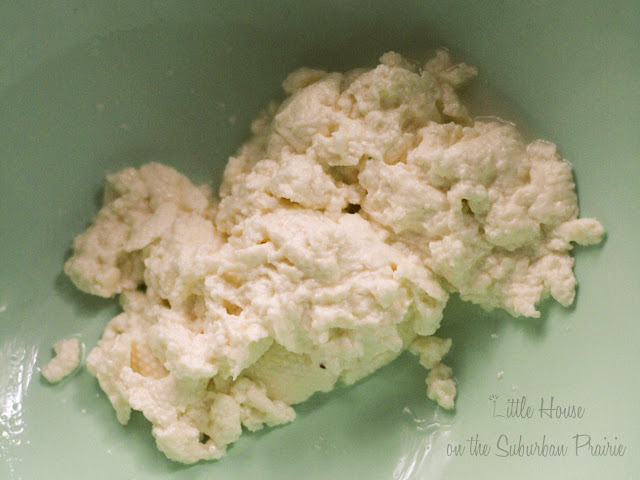When you don't have a lot of space to work with, you have to do some serious editing to your planting list. Although, having said that, you'd be surprised how much you can grow in small spaces. I'm a pretty no-nonsense, utilitarian type of guy so I went straight for the jugular. For me, planting was decided strictly on usage, cost, viability, savings potential, you get the picture. No froo-froo things, like appearance or food fads (example: swiss chard). It was all by the numbers.
Summing them all up in my head, I found that I could break down the plants into a three main categories: Consumption, Cost Savings, and for lack a better term, "It Just Tastes Better." Here's the roll call.
Consumption
This is a big deal because what's the point of planting something if you're not going to use it. Kind of a "duh" moment. On the herb front, we use parsley, sage, rosemary, basil, and thyme a lot, so they were the first to go down. We also use a lot of things from the onion family (also called, "allumiums") so we put down green onion, chives, garlic, and shallots. We didn't have room for regular onions, but I think they'll be one of the first things to go down when we reclaim some more space. Last would be potatoes, carrots, green beans, and sugar snap peas. Those guys are staples on our dinner plates so we planted some of those also.
Cost Savings
Cost savings is how much money we'd save harvesting our own produce rather than purchasing it at the grocery store. First, let me say that we are talking about fresh herbs, because well, fresh is just better. When we go to the grocery store, if we get a little plastic container of fresh herbs, it costs us $2.50. That's for about 2 ounces of herbs. Sure, $2.50 isn't that much, and you don't need to use a lot of it for your cooking, but it is probably one of the most disproportionately costed items in the grocery store. $2.50 for 2 ounces means that per pound, the cost is $15.00! That's more than most cuts of meat. After a while, it adds up.
On a different level, cost savings is also minimizing the amount of unused, and thus wasted, produce. Herbs fall into this category again. Since you don't need a lot, half of your package can go off before you ever get to use it and waste like this just kind of gets to me. The same thing applies to green onions actually. Green onions only cost $1-1.50 for a bundle, but they wilt after about 4 days in the fridge. That's much, much faster than the herbs, and that kind of perishibility led me to planting our own.
The nice thing about having your own herb plants is that you can take what you need and leave the rest in a living condition. Perishibility isn't really an option, unless you're getting close to winter, but the nice thing about many plants is that they come back in the spring.
It Just Tastes Better
When harvested at the proper time from your own garden! The last four words can be omitted from that sentence in all honestly, but the only way you'll achieve the sentiment in today's world is by buying your produce at a farmer's market. All of our fruit; strawberries, peaches, pears, and the tomatoes (have we reached a consensus on whether they're fruits or vegetables yet?) fall into this category. The key for all of these things is allowing the produce to ripen on the plant until they reach their maximum flavor content. If that's the case, what could be better than picking it straight off the tree/vine?
Those plants that were going to be long-term fixtures to our garden really had to have everything working for them - we really wanted to maximize their success and minimize regrets in the future. I'm talking about our fruit trees. We toyed with several different types of fruit trees that would grow well up here: cherries, apples, pears, peaches. Our final decisions met all our criteria not only on the big three categories, but the smaller ones too.
Pears and peaches are both things Chrissie and I love so we won't get sick of them (if you haven't guessed, consumption is predicated on not getting sick of what you're eating). They are also quite costly, $3.00-6.00 a pound at farmer's market, so we're doing well on the cost savings front. I already talked about maximizing flavor. We also took care to pick breeds that grew well up here and would fruit at the right time. Get something that bears fruit too early and it won't have enough sunlight to produce really good tasting fruit. Too late, and you risk the weather getting too cold and again, fruit that isn't totally ripe. Also, it can cause stress on the tree because instead of working on becoming dormant as the weather is getting colder, it's still trying to squeak out fruit. The fruit tree decision definitely took the longest of all our plants.
Of course there are caveats to all of this. Chrissie is a wonderful moderating force in our garden and I am really grateful to her for it. She instigated the lettuce and spinach plants in the garden. She really wanted to make fresh salads, but I was like, "We never eat salad." To which she responded, "Maybe we would if we had fresh lettuce." So now, we eat a lot of fresh salad. It's pretty great too. If Chrissie wasn't around to think-outside-the-box as it were, we'd be missing out on that.
Anyway, that's how things came to be in our garden. Like I said before, as we reclaim more land to use, other things will start going down. Those new things, being farther down on our list, won't need to fit as nicely into my growing criteria. I really want to grow a blueberry bush. I love them, but Chrissie's fairly ambivalent towards them. Asparagus is something we both enjoy, but don't eat as much. Same with Oregano. You know, the more I sit here and think about it, the longer the list gets, so I think I'll just stop here. If we ever plant these things, you'll be the first to know!






























